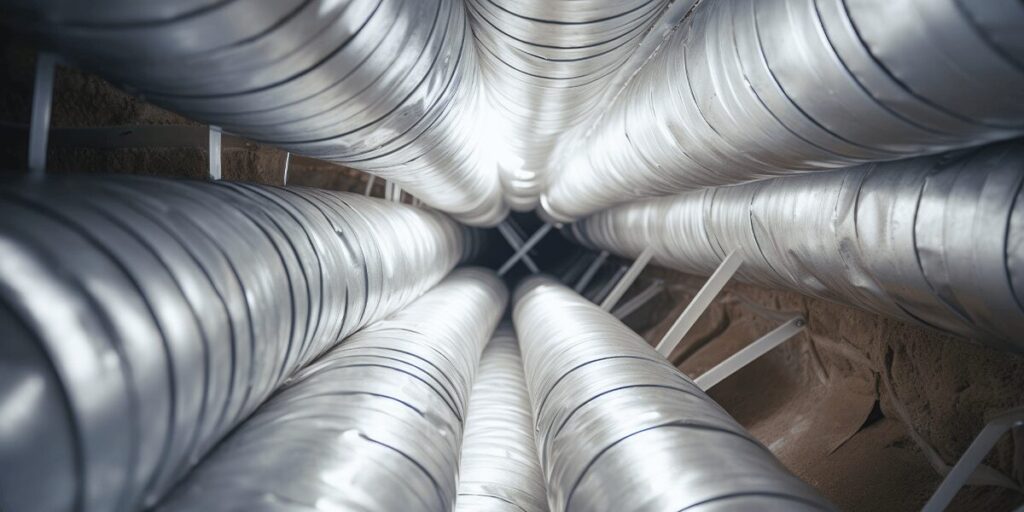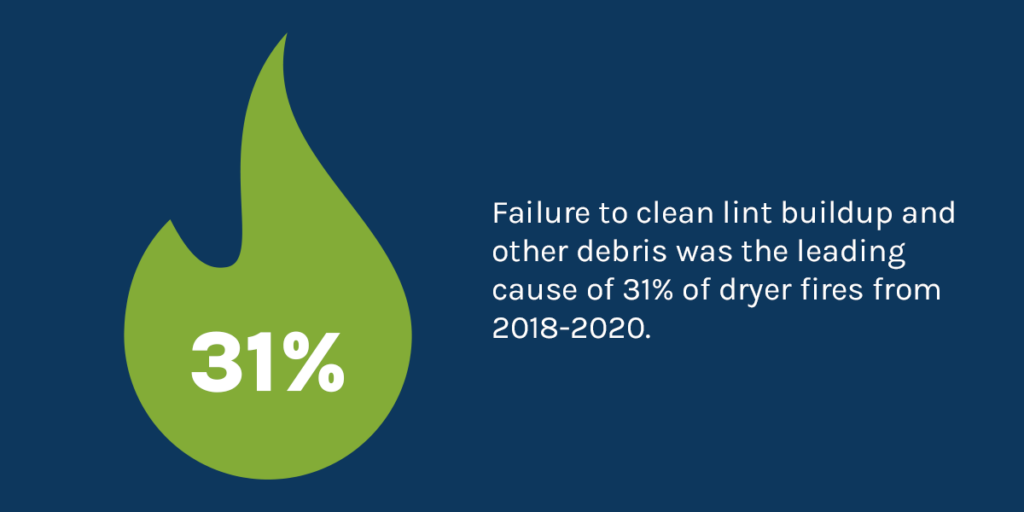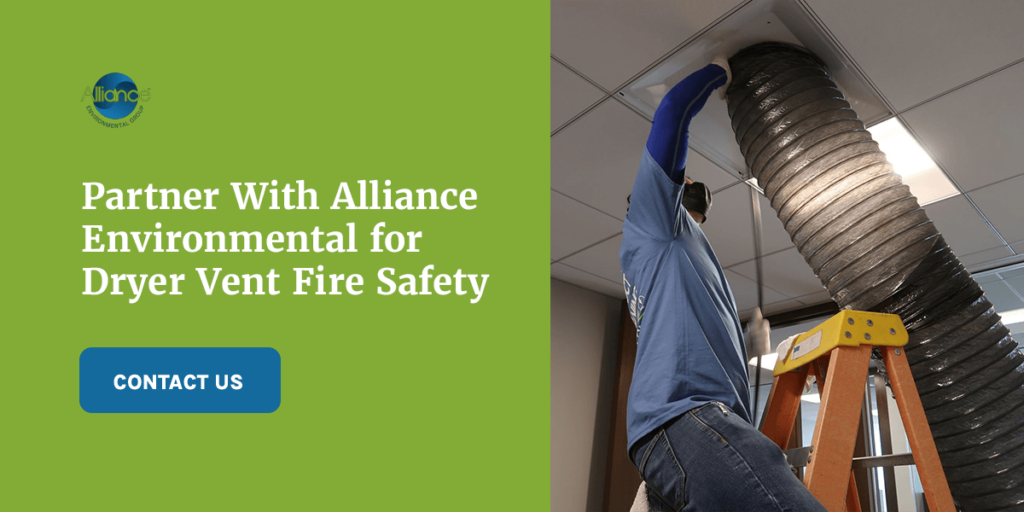AIRTEK
MINTIE
COAST ENVIRONMENTAL
PACIFIC HVAC
ARE NOW A PART OF THE ALLIANCE ENVIRONMENTAL GROUP!
New name, same great service – plus, an array of new service offerings!

Every year, firefighters respond to structure fires due to clothes dryers. Most of these fires occur from lint getting caught in the dryer’s vent, heating the machine to the point of ignition.
As a result, it’s essential to clean out your dryer vents to protect the dryer’s performance and prevent fires and injuries associated with constricting the machine’s ductwork. In this guide, you will learn the causes of dryer fires, the importance of dryer maintenance, and tips and best practices you can follow to protect yourself and your business.
Knowing the common causes of dryer fires is essential so you can put preventive measures in place. A dryer can catch on fire due to the following reasons:
It’s essential to spot the signs of a failing dryer to prevent fires. For example, you can look for signs that indicate lint buildup — often displayed by items taking longer to dry than they should. A few other signs you shouldn’t ignore include a burning smell from your dryer, an extremely hot dryer or clothing, abnormal sounds and excess lint.

Now that you know what causes dryer fires, here are tips and best practices to prevent them:
Having a dryer that is installed incorrectly can cause complications that lead to a fire. Ensure your dryer is connected to the proper voltage electrical outlet. The ventilation duct should be secure and properly attached to the dryer and the outside exhaust vent. Also, choose the location of your dryers carefully. When placing one, check that it isn’t too close to other appliances or shelves.
Clothing dryers rely on proper airflow, and obstructions can cause heat to build up. A dryer can catch on fire when you forget to clean out lint filters regularly. Clean the lint out from the dryer lint screen after every load. This small task will reduce the risk of a fire and help the laundry dry faster.
Another best practice when using your dryer is to avoid drying clothes without the lint filter in the dryer. The filter protects the appliance’s inner workings from collecting lint and pushes it into the ducts. Without a defensive shield, you can experience a dryer vent fire that spreads throughout the ducts.
When drying clothing, always ensure the lint trap is correctly in place. Replace the filter if it appears worn or develops any holes.
It’s important to use your dryer correctly to avoid complications that could lead to a fire. When you overload the dryer with too many items, an excessive amount of lint can build up and prevent the dryer from properly ventilating. The dryer cannot ventilate appropriately if it’s at or above capacity, leading to excessive heat. It’s always best to refer to your dryer manual if you’re unsure how many items your dryer can handle.
Pay attention to product labels and instructions for washing and drying to protect items and prevent dryer vent fires. Clothing soiled with flammable compounds like alcohol, gas or oil can be set ablaze when interacting with the heat from the dryer. Instead, it’s best to wash them multiple times to remove the chemical or substance and then consider hang-drying them.
Also, avoid putting plastic, foam or rubber in the dryer, as objects made of these materials can ignite more efficiently than natural fibers. Keep combustibles, such as clothing, cardboard boxes and cleaning supplies, away from the dryer area.
Despite all the lint and debris that the lint filter collects, some can inevitably sneak into the ducts. Over time, lint can build up between the dryer and the exterior vent outside your building.
Clothing taking longer than usual to dry can indicate an obstructed venting system. If you notice a burning smell or your clothing is too hot when taking it out of the dryer, stop the dryer immediately, unplug it and inspect the duct and vent once it is cool.
Regularly inspect and clean your outside vent to reduce the risk of a dryer vent fire. You can hire a professional service to clean your ducts yearly or more often, depending on your use, to prevent buildup and associated risks.
While it’s essential to regularly clean ducts, filters and vents, you should schedule professional dryer maintenance services if your dryer vent system is long, complex or challenging to inspect and clean. Clothes dryer fires are dangerous and damaging. They can lead to injuries and insurance implications.
If you have a gas dryer, professionals can also ensure the lines and connections are still performing correctly. Regular HVAC system services can contribute to fire prevention, preventing injuries and protecting your property and bottom line. Professionals have the expertise, experience and specialty tools to inspect, clean and repair your dryers correctly right the first time — saving you time and money in the long run.
While dangerous and costly, you can easily prevent dryer fires with the right strategies. Keep the tips in mind above and work with a professional servicer to ensure you maintain your appliances and vents properly.
If you need dryer vent maintenance and cleaning for your commercial business or organization, partner with Alliance Environmental. Our services include fire damper testing and repair, air duct cleaning, HVAC maintenance, commercial dryer vent cleaning, and more to prevent fires on your property.
For your peace of mind and safety, request a quote or call (877) 798-2240 for dryer vent maintenance services.

AIRTEK
MINTIE
COAST ENVIRONMENTAL
PACIFIC HVAC
ARE NOW A PART OF THE ALLIANCE ENVIRONMENTAL GROUP!
New name, same great service – plus, an array of new service offerings!